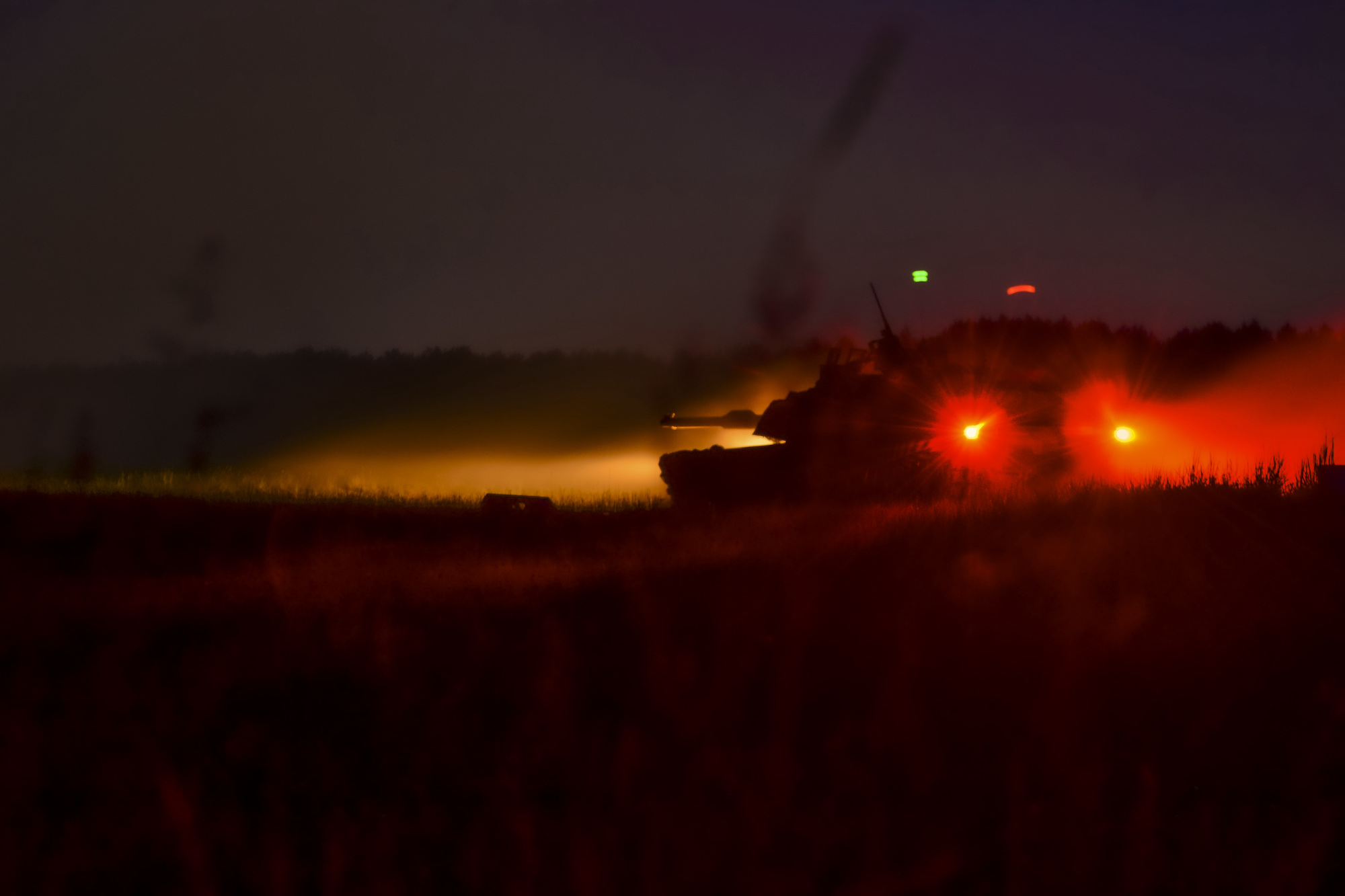

Last week, American defense giant General Dynamics teased the latest iteration of its long-running tank design online. Part of a roll-out of multiple machines under the banner of “Next Generation Battlefield Technology,” the Abrams NextGen hints at the ways in which a newer version of the venerable family of armored vehicles aims to be an improvement over its predecessors, and an asset to future battlefield commanders.
General Dynamics is teasing this Next Generation Abrams through four videos, each with a title that reads like promotional material for a bonus character in a video game. They are “Legend Mode. The Next Generation of Dominance,” “Superpower. Cape Not Included,” “Brains and Brawn. A Lethal Combination,” and “Silent Strike. They’ll Never Hear Us Coming.” The videos, each under a minute, feature the camera panning over a glossy rendering of a tank, highlighting features such as headlights, embedded cameras, treads, and the turret’s main gun.
More will be revealed on October 10, at the Association of the United States Army conference in Washington, DC, where General Dynamics Land Systems will unveil the latest Abrams alongside a host of other machines. These include a teased Next Generation Stryker armored transport, and several varieties of support robots.
With a fuller roll-out of the Abrams expected in the fall, the teaser instead makes the case for why the Pentagon should continue to invest in heavy armored vehicles, and why it should do so now.
This first tanks emerged in 1916
Tanks debuted during World War I at the Battle of the Somme in September 1916, and have been a part of military planning in the nearly 106 years ever since. Tank evolution was rapid in the years between the World Wars, and especially during World War II, while anti-tank techniques were developed and honed into a working practice. “Steel hedgehogs,” which date back to the 1930s as a jack-shaped obstacle that can pin in the air any tank that drives over it, have seen a resurgence, deployed by Ukraine as a defense against the massive tank-powered advances of Russia’s invasion.
A plethora of anti-tank weapons, like Javelin anti-tank missiles or the Carl Gustaf recoilless rifles, give soldiers fighting on foot a chance to ambush and destroy tanks. The success of these weapons, especially in the early days of Russia’s invasion, have caused some military commentators in the United States to question if tanks still have a role on the battlefield. Compared to anti-tank missiles, tanks are expensive, vulnerable, require multiple people to operate, and cannot go everywhere that soldiers on foot can.
What tanks do offer, especially to a military that can effectively support them with soldiers on foot, artillery, and an air force flying overhead, is the ability to advance under fire, and then drive defenders from entrenched positions. Armor that protects against regular infantry rifles, as well as advanced defenses and plating against many kinds of existing anti-tank weapons, helps ensure that tanks will reach enemy lines. Once at the enemy line of battle, tanks send defenders into retreat and panic. The massive cannon that defines all modern tanks means they have the firepower on hand to destroy any enemy artillery or vehicles encountered once a defensive line has been breached.
The Abrams began its life in 1979
When the first Abrams prototypes were developed in 1979, PopSci covered the XM-1 Abrams as especially survivable in the face of new anti-tank weapons. These features included a lower silhouette, and a smokeless and quieter engine than preceding tank designs. Plus, compartmentalized storage for the engine, fuel, and ammunition, helped prevent a fire from one area contaminating and detonating another.
In the US since 1980, the Abrams has been the main battle tank. It was designed to defeat Soviet tanks in land battles in Europe, while also being protected against the new anti-tank missiles that saw devastating use in the 1973 Arab Israeli war. The M1 Abrams would make its combat debut in 1991’s Desert Storm, when 2,000 of the tanks were deployed, but no tank crew members were killed. Since then, the tank has seen action in Afghanistan and Iraq under US command, with upgrades to armor and gun caliber since, but coming at the price of a reduction in top speed.
In a 2019 document from the Army outlining desired improvements for the latest version of the Abrams, the Army requested improved cameras and sights for the gunner, more sophisticated cameras for the tank commander, a fire control system that could communicate with a new kind of smart round for the gun, a meteorological sensor to calculate atmospheric effects on ballistics, and more useful internal diagnostics.
While it’s unclear if any of those improvements have been made, the emphasis on sensors in the teaser video suggests that new and capable cameras and sensors are absolutely part of what the next generation of Abrams tanks will bring to battle. With the promise of brains and silent strike, it’s likely that enhanced onboard processing is part of the whole package, and maybe even hybrid electric operation, to allow the tank to run on an engine much quieter than internal combustion.
Other changes could include its shape in general. “From what we can see in these various promotional materials, the [Next] Generation Abrams has at least some changes to the general outward shape of the hull and turret,” writes The War Zone. “It’s not clear whether this might reflect [any] changes to the crew composition in this version. All existing Abrams variants have four-person crews, with the driver in the hull and the commander, gunner, and loader in the turret.”
When the Army first introduced the Abrams as a tank, it was replacing the M60 model, used in Vietnam, that had debuted just 21 years earlier. With Abrams tanks now entering their fourth decade of service, it’s an open question if the form itself is in need of change, or if the future is new parts and sensors in the same old shell.
